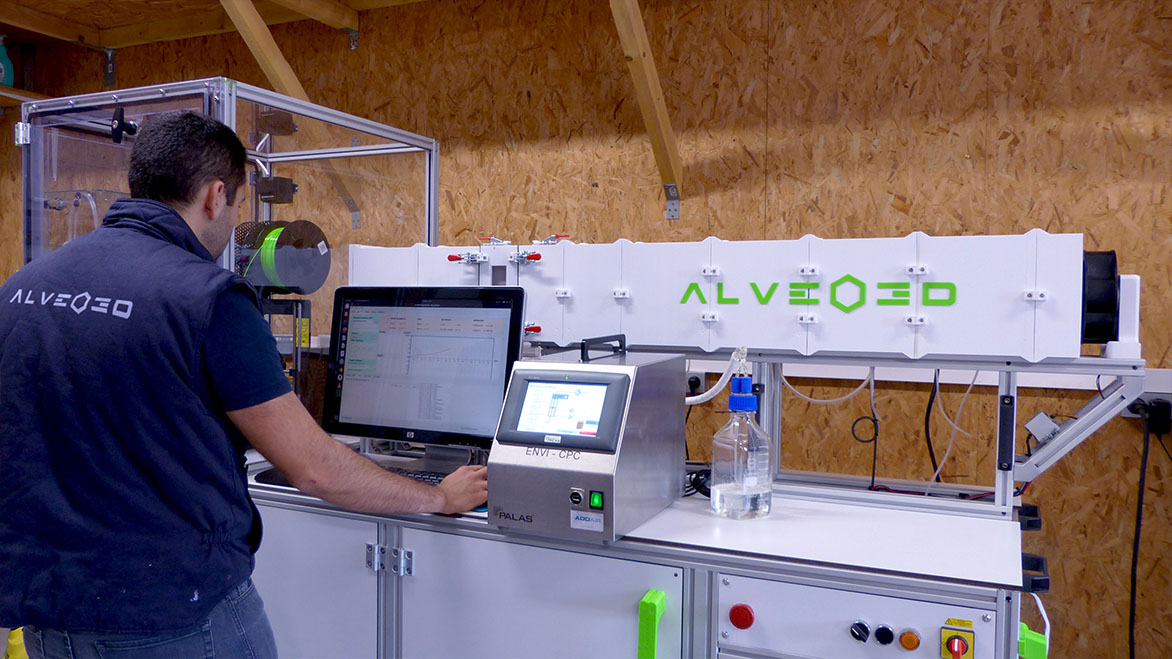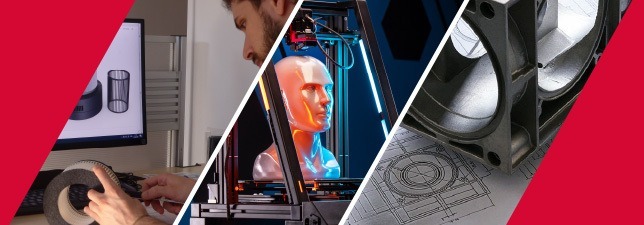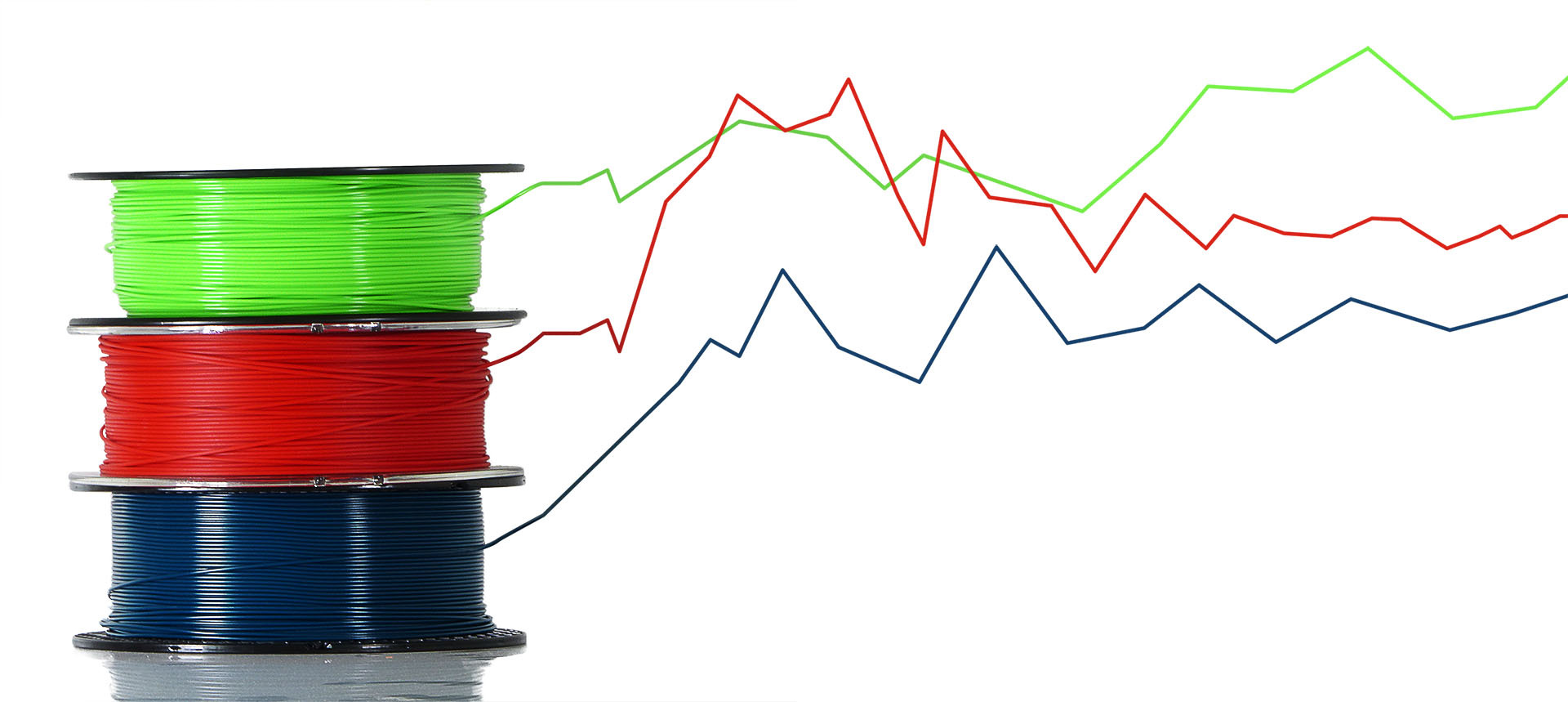In 3D printing, nanoparticles are everywhere. Chronic or repeated exposure to these pollutants can harm health and potentially reduce life expectancy. FDM 3D printing has shown a potential health risk for operators exposed to toxic fumes caused by the melting of the plastic in poorly ventilated or unventilated rooms. These toxic emissions are mostly composed of nanoparticles with concentrations ranging between 10 and 100 nm.
To better understand the danger that these emissions can cause, make sure to read our previous article: “3D printer nanoparticle emissions, dangers and solution!“
Today, we focus on the main risk: nanoparticle emissions, also called ultrafine particles.
II. The common filaments of 3D printers
In a study conducted in 2021, we confirmed that nanoparticle emissions differ depending on the filaments used. Indeed, to quantify the number of nanoparticles produced in an enclosure during a print. We focused on 3 of the most commonly used filaments:
- ABS: Known for its rigidity and good resistance to shocks, but also for its high extrusion temperature (250 °C). However, it is more difficult to print.
- PLA: Very popular and not sensitive to warping, it can easily be used for printing large parts, but it is not resistant to high temperatures. The extrusion temperature is 215 °C.
- PETG: One of the most well-known and used filaments in the world thanks to its good resistance to shocks, its ease of printing, its stability, but also for its transparency. The extrusion temperature is 245 °C.
We conducted a measurement campaign in the Alveo3D facilities, using our own measurement bench specially dedicated to the study of nanoparticles emitted by desktop 3D printers.
We studied these emissions using a Palas condensation counter model ENVI- CPC-100. The measurement range of the device goes from 7 to 5000 nm with an accuracy of 5% up to 100 000 p/cm3 and 10% past that. Thus, the size of the nanoparticles emitted by the fusion of the filaments that were measured in this study is mainly located between 10 and 200 nm.
To generate particles, a Prusa MK3S 3D printer was used in a controlled airflow chamber mounted on a measurement bench made by Alveo3D.
These measurement series were conducted by printing the same model.
For each plastic filament, particles were measured following 3 distinct steps:
- Step 1: Measurement in the enclosure without air ventilation
- Step 2: Measurement in the enclosure with air ventilation
- Step 3: Measurement after filtration

3D printers are particle generators. The airflow is directed into the sampling duct, which forces the particles to pass through the filter. The upstream section of the filter allows measurements to be conducted on the particle production in the 3D printer enclosure. This configuration is comparable to the actual usage conditions of 3D printers equipped with ALVEO3D safety enclosures. The downstream section of the duct represents the “clean” air leaving the filter.
Each 3D printing process was programmed with the same GCODE file, (a programming language that allows the machine to understand the instructions needed to produce the final part). Furthermore, the extrusion temperatures applied were within the range recommended by the manufacturer.
For each of these steps, we measured nanoparticle emissions. The measurements allowed us to monitor the emission of nanoparticles emitted by those filaments.
III. Is ABS really the most toxic filament?
Filament ABS emissions:
- Turned out to be the most emissive filament, probably due to its chemical composition and/or extraction temperature. . 200 to 300 times more nanoparticles than normal air pollution.
- Without ventilation: high concentration peaks of nanoparticles throughout the printing process. High risk for the operator.
- With ventilation: limitation of nanoparticle emission peaks. But an important risk during 3D printing.
- Post filtration: significant reduction of nanoparticle concentration in the air. In accordance with air pollution values.
Filament PLA emissions :
- Thanks to a lower extraction temperature, we can say that PLA is a low-emission filament compared to ABS while generating concentrations 5 to 10x higher than air pollution.
- Without ventilation: On average, air pollution with particles can be multiplied by three
- With ventilation: there is more particle pollution than in the previous measurement without ventilation. Our theory implies that air agitation generates variations in particle concentration in the volume of a 3D printer enclosure. Concentrations exceeding 100,000 p/cm3, which is still a high level and therefore requires limiting exposure.
- Post-filtration: Significant pollution reduction, the concentration is below 1000p/cm3 (less than air pollution) throughout the printing process.
Filament PETG emissions:
- A little bit more emissive than PLA but less than ABS
- Without ventilation: particle peaks but not as high as without ventilation. The peak goes from 200000 p/cm3 to approximately 48000 p/cm3. 10 x lower than ABS but 10 x higher than air pollution.
- With ventilation: Maximum concentration is limited and the average rate is decreasing. The risk is reduced but still present during printing.
- Post-filtration: noticeable filter efficiency: the particle concentration is lower than that of the air pollution.
To learn more about our P3D filter and its efficiency we invite you to read the following articles:
IV. How to protect yourself from nanoparticle emissions?
With these different measurements, we were able to establish some conclusions and recommendations
Depending on the filaments used, fine particle emissions can vary. Therefore, we recommend that operators use low-emission filaments such as PLA. Furthermore, in addition to good quality air filtration, it is recommended to use it continuously since air pollution levels are systematically exceeded when printing.
- Having the fan and printer control interfaces accessible outside the enclosure to avoid exposure when printing.
- It is recommended that you reduce your exposure time. Once the printing is done, it is also recommended to close the chamber with the ventilation on. Since very few studies prove the effects of nanoparticles in terms of toxicity on the human body, it is difficult to say at what level of particle concentration it may become toxic to one’s health. Therefore, it is important to apply a precautionary principle by limiting exposure time, especially when accessing the printer when changing filaments and at the end of the printing process.
Ventilation recommendations with electronic control card (V2 card + P3D filter)
- ABS: 80% ventilation until printing begins. 30 to 40% throughout the printing and until the bet cools down.
- PETG/PLA: 80% ventilation until printing starts. 50 to 70% during printing and until the bed cools down.
- At the beginning and end of the print cycle, you can also quickly drain your printer if you need immediate access to it.
CAUTION! The ventilation speed can have an impact on the print quality, especially for filaments that are sensitive to warping. It is therefore important to adapt this ventilation speed to the temperature conditions to which the 3D printer will be exposed and to increase the ventilation time when the filtration system is used at a slow speed.
FAQ
Is printing with PETG and PLA filaments indoors safe?
Yes, printing with PETG (Polyethylene Terephthalate Glycol) and PLA (Polylactic Acid) filaments indoors is generally considered safe compared to other materials, such as ABS (Acrylonitrile Butadiene Styrene), which emits more harmful fumes.
PLA is a biodegradable thermoplastic made from renewable resources like cornstarch, making it one of the most environmentally friendly materials available for 3D printing. It emits a mild, sweet smell when heated and releases minimal ultrafine particles (UFPs) and volatile organic compounds (VOCs), which are less harmful than those released by other plastics.
PETG is also safer to print with indoors due to its low emission of harmful fumes. Our studies that have been done found that PETG compares very favorably with other filaments, with minimal particulates and zero VOCs. While it may release a slight odor during printing, it is less concerning than materials like ABS.
However, even with these safer materials, good ventilation is still recommended when printing indoors. Ensuring a well-ventilated space helps to disperse any UFPs and VOCs effectively, maintaining a healthy indoor environment. If you’re printing in a room without adequate ventilation, consider adding an air purifier or venting system to reduce any potential risks further.







0 Comments